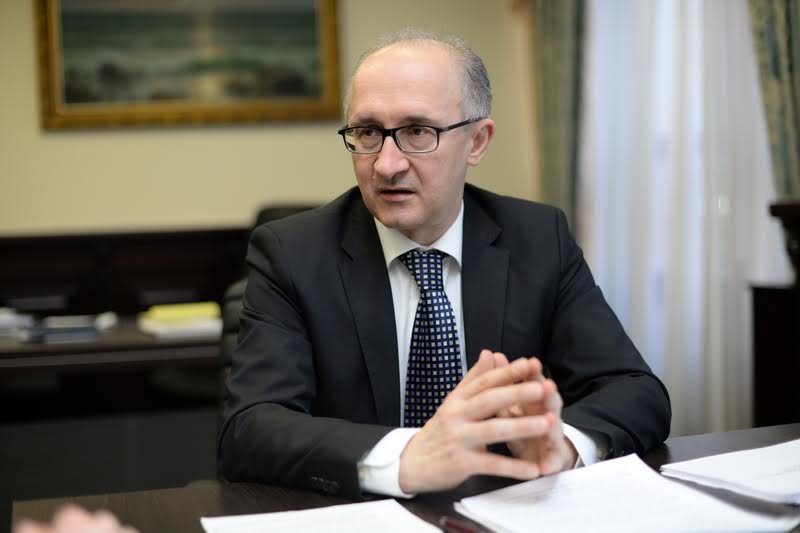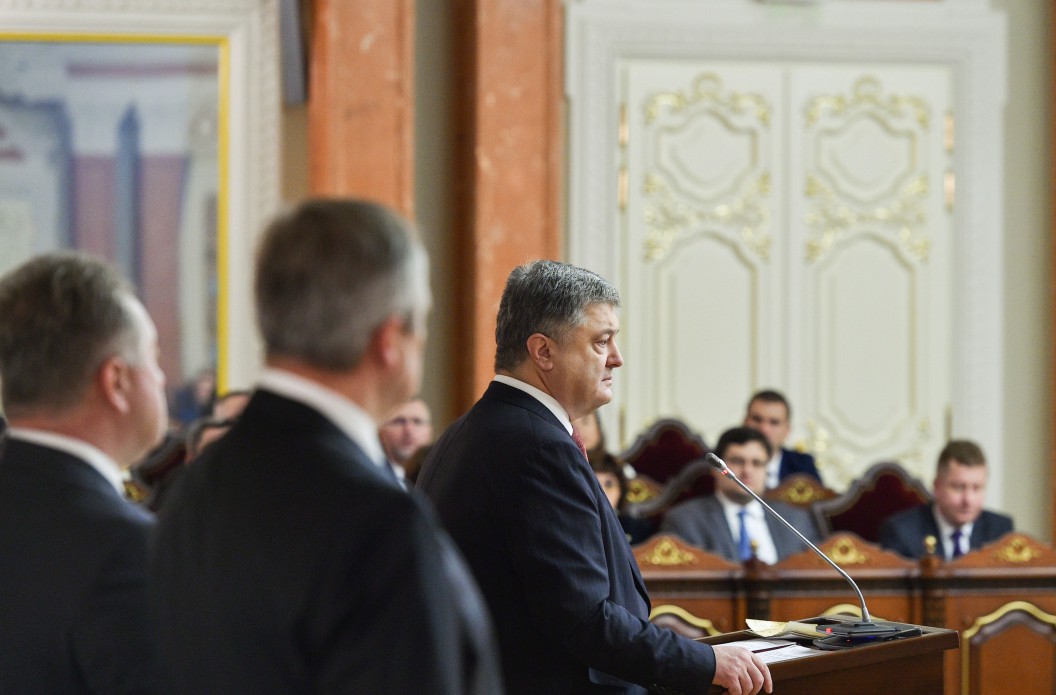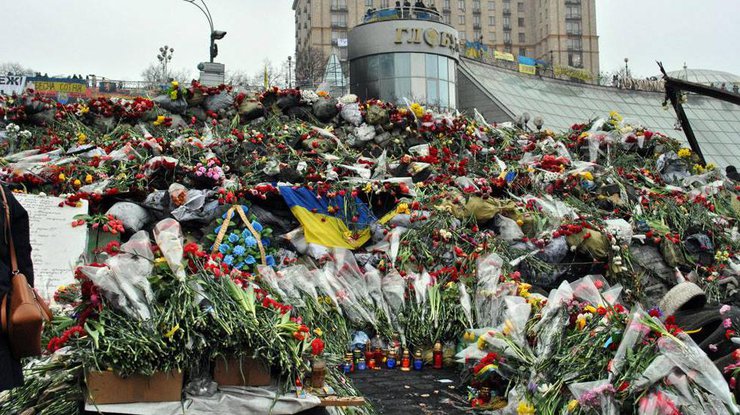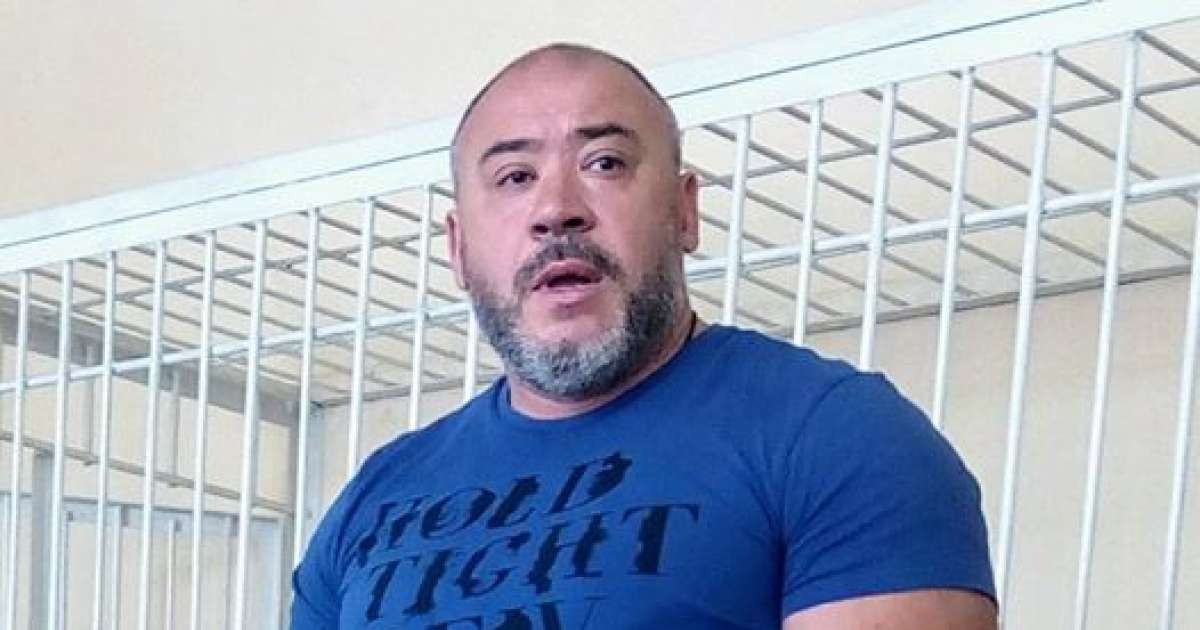It’s an open secret that an effective and unbiased judicial system is a must for attracting investments into a country, No one would invest knowing that his property may be easily taken away.
The post-Maidan authorities in Ukraine initiated one the most important reforms – the judicial one. This reform has two stages:
- an overall reboot of the highly corrupted system through an open competition creonducted by the High Qualification Council of Judges (HQCJ) with the involvement of the general public represented by the Public Integrity Council (PIC).
- the dismantling of the four-element system set up by Yanukovych with the creation of the High Specialized Courts which practically replaced the Supreme Court.
The process of judicial reform was plagued by scandals from the very start. Civic activists accused the HQCJ of being biased in its work. Euromaidan Press decided to look into the latest developments regarding the judicial reform by interviewing Serhiy Koziakov, the Chairman of the HQCJ, on the critical issues concerning the main elements of the reform, the relations between the HQCJ and the PIC, Anti-Corruption Court and much more.

Good afternoon, Serhiy Yuriyovych, I think it’s better to turn straight to the questions. Could you please explain what the reform of judicial system in Ukraine is about? What are the main innovations?
The judicial system was quite balanced, professional, and practically uncorrupted till 1998. However, when the majoritarian system of the Verkhovna Rada elections was introduced [today, elections in Ukraine are held according to a mixed majoritarian-proportional electoral system - Ed.], the oligarchs became People’s Deputies (MPs) and they tried to buy everything, including court decisions.The complicated and corrupted four-element court system will be a part of history. Due to the reforms at the judicial system, the President and the Verkhovna Rada will have no real influence on the judges’ appointments.
There were a few attempts aiming at reforming the judicial system at the beginning of 2000. The last one was conducted successfully in 2010, but in favor of President Yanukovych. The Supreme Court of Ukraine was considerably weakened by his initiative. Then, the High Specialized Courts of Ukraine were created as an additional element in the judicial system. These courts were given practically the authority of the Supreme Court.
In result, the judicial system started to consist of four elements.
- the local courts;
- the Court of Appeals;
- the Court of Cassation, or the High Specialized Court
- the second level of Cassation – the Supreme Court.
When a citizen wanted to go to the Supreme Court, it was necessary to initially go to the High Specialized Court. In it, there were no proper competitions to fill the positions, as all appointments were politically motivated. The personnel issues were under the control of the Presidential Administration. They knew about vacant positions and appointed the right people. A great number of judges came from the Donetsk and Luhansk oblasts in order to control the key positions in the courts situated in Kyiv.
The current reform, introduced along with approval of amendments to the Constitution, has seriously changed the status quo. The new Supreme Court will be created via an open competition. When this selection process is over and the new Supreme Court will be launched, the High Specialized Courts will be dismissed. The complicated and corrupted four-element court system will be a part of history.
Due to the reforms at the judicial system, the President and the Verkhovna Rada will have no real influence on the judges’ appointments. Previously, the Parliament could vote to perpetually prolong the work of judges whose 5-year contracts were over. MPs also could dismiss judges, strip them of immunity. The Parliament did not vote on the appointment of over 800 judges. Some of them even died waiting for the voting.
Nowadays, this is changing. The Supreme Council of Justice (SCJ) is engaged in the process of judges’ appointments, in lifting immunity or arrest. The High Qualification Commission of Judges (HQCJ) selects and assesses the qualification of the judges. The President’s Administration has not been meddling as it did before.

What is so unique about this competition?
The competition to the Supreme Court, which is conducted by the HQCJ, is another proof of depoliticization and a key stage of the reform. For the first time in the history of Ukraine, judges to the Supreme Court are being selected through an open competition. This has never happened before.
200 positions are envisaged, but we announced a competition for the first 120, in order to take the drawbacks into consideration. Before we launched the competition, we thoroughly studied the experience of 45 states. At the same time, we took international practice into account, so we have not only judges but lawyers and academics as candidates. They are the fresh blood from outside of the System.
Some countries place quotas on judges. For example, in Portugal, only 10% of positions in the Supreme Court is given to lawyers. We do not have such quotas but there is a stable trend – 30% of lawyers. Soon, we will get to know the quantity of lawyers or scientists who are going to be Judges of the Supreme Court. The third innovation is the unprecedented participation of the general public in this competition, namely the creation of the Public Integrity Council (PIC) which should assist the HQCJ in determining the candidates’ integrity.
This competition is ongoing since last November. What did the candidates have to go through?
They should prove they have a right to be candidates for the Supreme Court, as they are appointed for life. The competition consists of two stages:
- a written exam which has two parts – an anonymous test and a case study. The anonymous test has 120 questions checked by the computer. The case study is written by hand. All the tests are depersonalized. There were candidates with a huge experience who got upset that they did not pass the tests.
- an interview with a candidate based on the careful examination of his/her file. For the first time, all the stages of the competition could be viewed at the HQCJ YouTube channel. The candidates should pass psychological tests by four methodologies and an interview with a psychologist. The tests were developed by the international organization which previously made them for the National Anti-Corruption Bureau (NABU), the police, and Prosecutor’s Office. The candidates’ files have been uploaded to the HQCJ web site. The file includes a lot of documents, in particular, the declaration of assets available to everyone, the declaration of integrity, family ties. Nobody in this country has presented such a quantity of needed files. There are a lot of documents regarding the career of the candidate, files from NABU, Secret Service of Ukraine (SSU), Ministry of Defence and Ministry of Education. The minimum amount is 200-250 pages, the record is 1800 pages. All these documents were scanned and uploaded to the HQCJ’s web site.
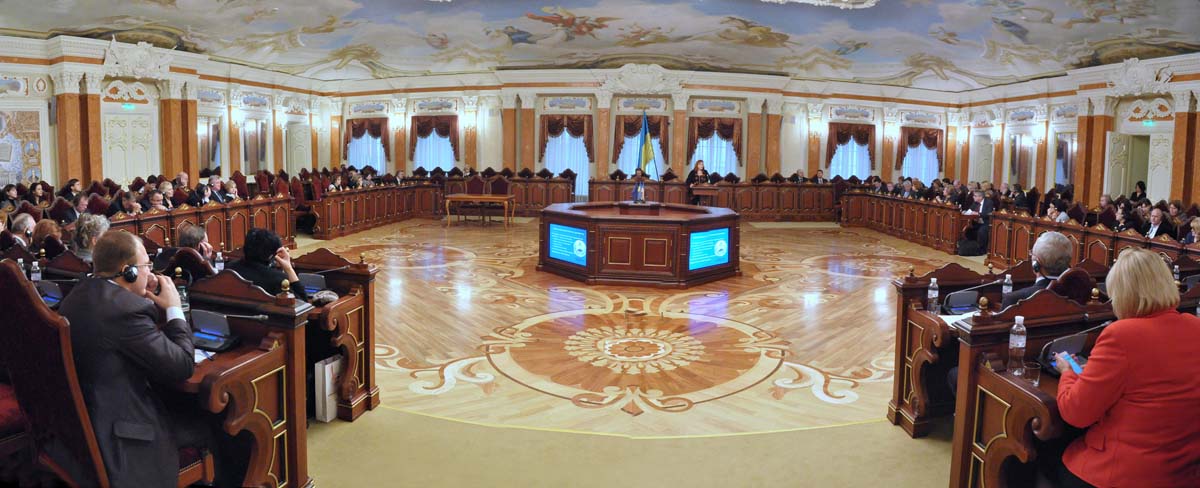
The long competition is nearing its end, but the question of whether we will receive judges of a new quality at the Supreme Court remains. This depends on the HQCJ’s work, which has come under accusation by the PIC, which states that odious judges dismissing the conclusions of the public. The latest incident was with Supreme Court Head Yaroslav Romaniuk, who openly supported Yanukovych’s “dictatorship laws” [a package of measures designed to crack down on Euromaidan protesters in 2014 - ed.] Could you please comment?
I can say much, but I will try to be concise. As I said before, the general public received unprecedented authority. The PIC, according to the law on “the Law on Judicial Power and the Status of Judges,” prepares data or a conclusion on a candidate in regard to his/her compliance with the criterion of professional ethics and integrity. The conclusion is announced during the interview conducted by three or four members of the HQCJ.
If it’s just information, the members of the HQCJ take it into consideration but it has no impact on the candidate’s participation in the competition. If it’s a conclusion, then there are two options: if the HQCJ approves it, then the candidate stops his/her participation; if the HQCH disapproves it, then this conclusion will be considered by all the members of the HQCJ at the plenary meeting. To overcome the conclusion, at least 11 votes from the overall 16 are needed, as prescribed by the law.
But it’s not enough to submit only suspicions to deprive the candidate of a possibility to go further. A representative of the PIC reads the conclusion during the interview and a candidate gives explanations, addenda to the files. Sometimes we are given 1-1.5 kg of documents. The members of HQCJ have to carefully examine them, make requests and check the information given in the conclusion. Otherwise, it would be unprofessional.
There are a bunch of cases when a candidate refutes the arguments given by the PIC. Secondly, the PIC abolished its own conclusion 12 times and changed it to “information.” It means that they recognized that they also may make mistakes. Thirdly, the PIC opinions were sometimes adopted by only eight of twenty PIC members. The members of the PIC give to the HQCJ a so-called “a separate thought” when he/she does not agree with the adopted decision.
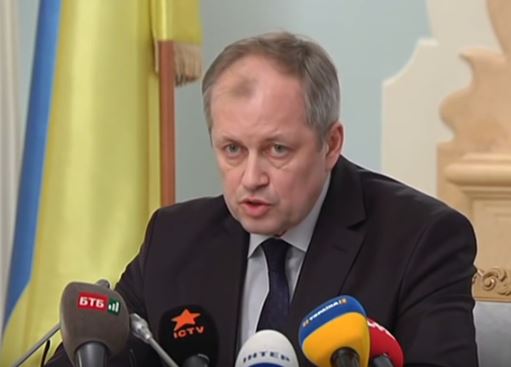
Like it was with Yaroslav Romaniuk’s case?
You can watch the record of the meeting at the HQCJ’s channel at YouTube. My colleagues told me that this candidate refuted all the arguments. The underlying complaint was that Romaniuk commented on Yanukovych’s “dictatorship laws” at the briefing. But he commented only on the law regarding the security of the judges and it was passed to the Parliament a year before these tragic events at Maidan. He has nothing in common with the “dictator’s laws” but it just so happened that this draft law was included into agenda when MPs voted for them.
So, sometimes there are cases when the evidential basis given by the PIC is not substantiated and definitive?
The PIC has had too little time to assess such an enormous quantity of information and speak with the candidate who would have a chance to tell them that everything looks different than it seems at the first glance. For example, a car which appeared in the documents of the National Agency on Preventing Corruption (NAPC) and the PIC was sold a long time ago, but it still is in the files. The PIC did not have that information. They refused to talk with such candidates and handed over to us the documents and only then we learned this.
The next question maybe belongs to conspiracy issues, but still. It is often said that President Poroshenko initiated the judicial reform but in fact, he tries to change only the façade leaving intact its essence. So maybe this is the real reason why judges with a less-than-pure reputation are going to be at the Supreme Court - because it’s simpler to make them take the necessary decisions for him and his entourage. Can you please comment?
One may exert pressure on the judge through the possibility of his dismissal. Now the judges of the Supreme Court will be appointed on a lifelong basis. No one will be able to dismiss them. The core point of the reform is that the presidents may change in this country, but the judges will stay independent. The only way for the President to influence the court system is to be an agent of the legislative initiative.
As of now, the Verkhovna Rada failed to adopt the changes to the Procedure Codes in the second reading which have been made taking into account the European experience. These changes would considerably simplify the judicial proceedings, make it more transparent and faster. Certainly, it would leave much less space for corruption and manipulations. The new Procedure Codes establishes an e-Court, so one may submit all the necessary documents at any possible time.
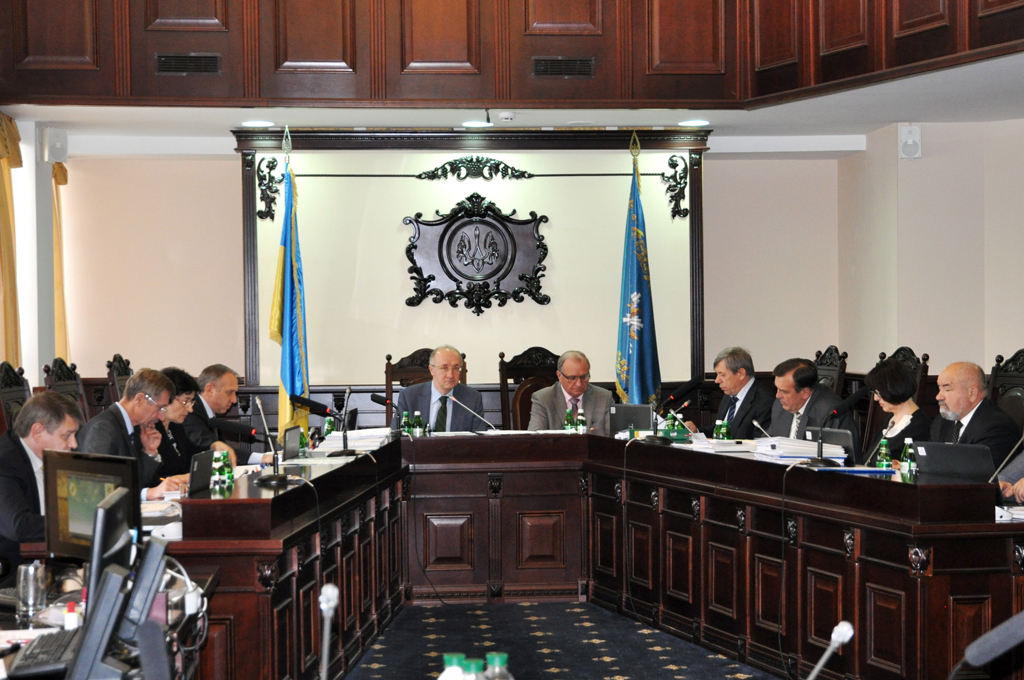
So, the bottom line is that the influence of President and other government bodies would seriously diminish?
I’d say radically. But it does not rule out the possibility that some judges would feel this sort of pressure. At the same time, it’s another side of the coin, let’s talk about it. A judge should understand that a lot depends on her. The candidates who would pass this extremely exhausted competitive selection would clearly understand that they have done it themselves. Nobody has bought this position. There was not a single chance to buy it.
The following question is about the competition itself. The PIC members often tell that the assessment system is not transparent enough, the HQCJ refused to publish the voting results and also there are accusations of manipulations with the testing results. And continuing with this further, the judge Roman Brehey believed the admission of 299 candidates from 382 was made in an unlawful manner because by his account they did not score enough points and this judge filed a lawsuit to recognize the competition as unlawful. What does this all mean?
The candidate Brehey sued us and lost, he may appeal to the Supreme Court. We have 30 lawsuits from the candidates who did not pass. I don’t think it’s a big number. Coming back to the first part of the question - the results of the testing were published immediately. You would hardly find such a practice in the world because the results of the testing and written exam are not published anywhere else. But we have done it.
Maybe because there is no such rampant corruption as in Ukraine.
They say it every time. I can say that corruption is everywhere. At the same time, the majority of the competition’s procedures are closed in Europe. In Germany, for example, the lists of the candidates are closed. In Ukraine, we have uploaded all the files to our website. Politicians who dropped out of the competition required us to publish the written exams to compare them. The tests were encoded twice, so no member of the HQCJ knew whose test he was checking. When a member of the HQCJ put his mark, he was not able to look at it again. It is envisaged by the normative acts to publish them. But if we had published them it would have meant that we changed the rules of the game which is underway. It is not professional. We have proposed for those candidates to come to us and finally make a copy of it and publish. Only Roman Brehey has done it – he has published his written exam at Facebook. But this did not play a wider game. The politician candidates didn’t take their exams and, consequently, did not publish them. This very fact means that it does not generate any interest neither from the professionals nor the general public. Fancy if we had published all 500 exams who would compare or assess them? Facebook does not conduct the competition and Facebook does not assess the results. The HQCJ has been doing this and is solely responsible for that. There are draft laws at the Verkhovna Rada on publishing the written exams. If the Parliament would vote for this, we would do it immediately.
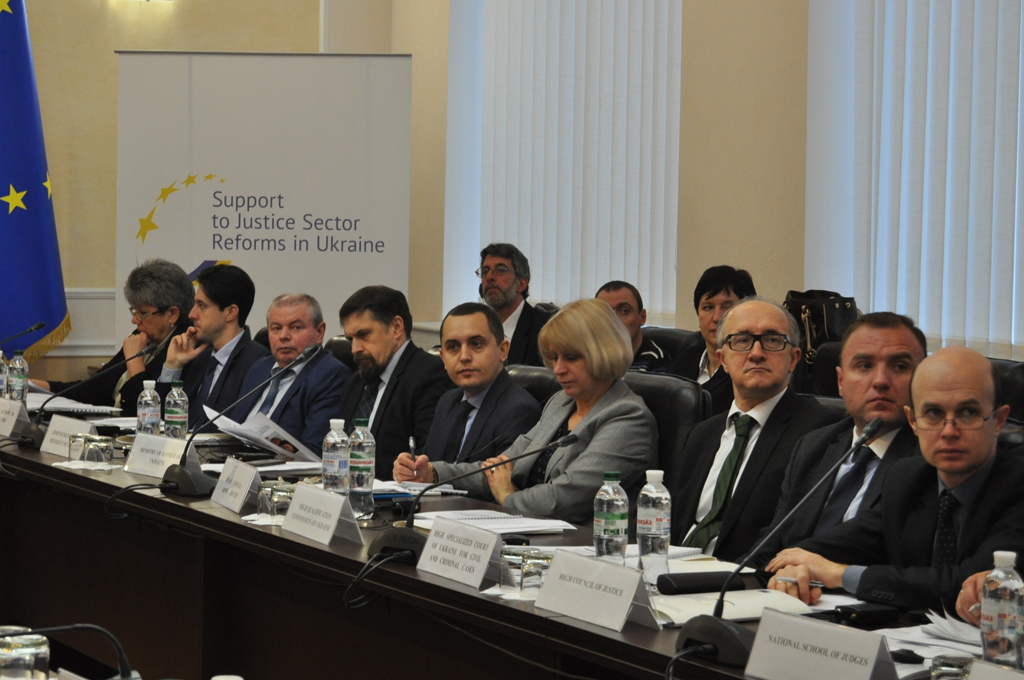
A big fuss around the reform has led to the fact that even ambassadors commented it, for example, the US ambassador Jovanovich and the EU ambassador Mingarelli openly stated that there are problems in reforming the judicial system. Boris Jonson, the UK Foreign Minister, said about the absence of progress in reforming the Anti-Corruption Court. Don’t you think that the reform is stuck?
The embassies are getting different information and of course, some NGOs share critical views with them. I know their contents, it includes biased and manipulated information. Especially in regard to the conclusions of the PIC which were disapproved by the HQCJ. During the second stage, the interview, 59 candidates out of 381 stopped their participation in the competition, this is 40% of those blacklisted by the PIC. Is it too many or not enough? We have nothing to compare with. There was no such competition before in the world. Plus, the competitions in Germany, France, the US did not include a cooperation with similar public organizations.
HQCJ members also met with ambassadors, the EU Commission representatives, international experts who, by the way, supported the competition. We give very detailed explanations to them. Not so long ago I had a working trip to Vienna by the invitation of the OSCE, and Brussels by the invitation of the EU Commission, where I had fruitful meetings with officials regarding the judicial reform.
I must say that it’s impossible to monopolize the right to criticize. We also have grounds to criticize other participants of the process. When it comes to the Anti-Corruption Court, we did not see the draft law, so we don’t know the role of the HQCJ in it. I have to say that there is practical experience in the creation of Anti-Corruption Courts in the world. There are three in Europe, overall there are 20 in the world. So, if it’s going to be another experiment in Ukraine with our participation I’d like lawmakers to decide if the HQCJ would participate or conduct a selective competition to Anti-Corruption Court. It would be great if the lawmakers asked for our point of view. Time must be taken into account, because it needs to conduct a selective competition to the First Instance Courts, launch the competition to the Intellectual Property High Court. The experts have discussed the possible participation of foreigners in the competition to Anti-Corruption Court. In any case, they who would be responsible for conducting such a competition must have an impeccable record. We should also take into consideration a lot procedure, for example, where these judges will work, the salaries, the timing of competition and many more. The competitive selection to the Supreme Court has lasted nine months in a row.
Let’s return to the judicial reform. Don’t you think that it’s going to be hard for Ukrainian society to believe that the new judges would be impartial and honest if, according to the PIC and a great number of journalistic investigations, they have undeclared assets, luxurious way of life or took decisions being abroad. The question how one may restore confidence to the courts?
Look, it is known, as you’ve said, from the media. But the PIC is not National Anti-Corruption Bureau (NABU) or the NAPC. NABU began to give us the files on judges which were engaged in the selective competition last year. When we assessed the first 250 judges, 1600 of judges resigned from June till September in 2016. By the way, it’s a very serious indicator. But the general public keeps silence about the positive changes. Only Türkiye has gone through such a “purge” after an unsuccessful coup d’etat, when 3000 judges were dismissed. In Ukraine, the judges resign because of the reforming of the judicial system. This spring we announced the start of the selection process, 5336 people submitted their documents. That means that these people trust us.
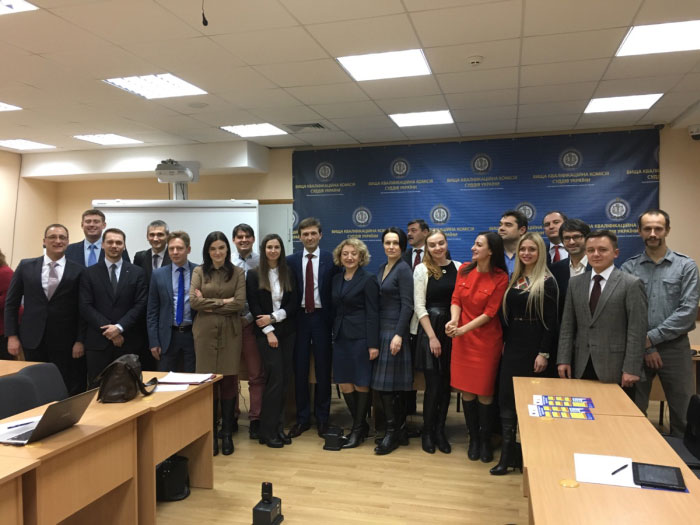
Do you think the experiment with the was PIC successful? How effective was its work? What problems would be necessary to avoid in the future?
I would like for experts to assess the activities of the HQCJ, the PIC, and HCJ after the competition. This needs to be done to fix the bugs and to see the roles played by these organizations, how all this works. The European Council gave its opinion regarding the work of the HQCJ. There are many questions including the reputations of the judges, assessments and verification of information. We’d like that at first there will be a constructive working discussion and only after allegations from them.
They have tried but it didn’t work out…
There were a few cases when it was better to wait for a while. One time, an allegation from the PIC came in the evening, while we had planned a meeting with them for the next day. Though, the general public also criticizes the PIC. Three members of the PIC resigned. We could give them a heads-up how it would be better to act in a given situation but they did not ask for that. We took a lot into consideration from the information or conclusions given by the PIC. It does not mean a victory when a conclusion had been overcome or vice versa. All important information is taken into account but nobody sees the rating.
It was promised that the Supreme Court would be launched on March, 2017. Wouldn’t all these competitions be realized in ten years, or maybe Minister Petrenko was right that it’d better to dismiss all the judges and re-recruit them?
I don’t want to comment the Ministers’ words. As for delays, I anticipate that the new Supreme Court would be launched this October. Other procedures which are not tied to the competition would be realized faster from September when the HQCJ comes back to work.
Some candidates visited occupied Crimea or Russia itself. It can become a serious threat because Russia’s FSB may try to reach them out and this may have significant consequences for Ukraine’s defense capability.
We take this threat seriously. By the way, we check not only the candidates themselves but their relatives too. We have this sort of information from NABU and the PIC draws attention to this. NABU give us the information about border crossings, how many days a candidate or his close relatives spend abroad. We speak about this sort of thing with every candidate. It can be not only Russia but, for example, Dubai, the Maldive,s or Poland. There was a case when a candidate spent 250 days in Russia, the other one spent 4. We asked him what he had done there for such a long time, he answered that he came to his friend with whom he worked together at the Far East. Another candidate’s mother had had cancer in Crimea, so she visited her a few times, but she informed the Ukrainian Security Service about every visit. When her mother died, she buried her in Ukraine. This information is available at the HQCJ YouTube channel.
Tell us something optimistic. When can we expect the launch of the Supreme Court?
I am a cautious optimist. The rating of the candidates will be announced by the end of July and the HQCJ would hand over it to the High Council of Justice [HCJ - the highest constitutional body in the judiciary system of the country. It approves, rejects or disqualifies candidates for the positions of judges that were proposed to the President- Ed] and they, in their turn, will work them out in August. I hope that they would make it out and hand over the documents to President to sign. The HCJ has a right to stop someone but the President has no such an option. All he can do is just to sign it.
What will happen if the HCJ would stop someone?
In this case, there will be not 120, candidates but 117.
So, the HQCJ would not launch an additional competition?
Now we would not do it. This competition was planned for 120 positions, but there are 200 at the Supreme Court. We would launch the second wave.
Read also:
- Ukraine’s judiciary reform: 5 things to know | #UAreforms
- Pursuit of judicial reform in Ukraine| #UAreforms
- Judiciary reform under threat because of the old new Supreme Court
- Judicial reform in Ukraine. What to expect from it| #UAreforms
- Old faces in courts endanger all Ukrainian reforms | #UAreforms
- Ukraine's hasty way toward judicial reform | #UAreforms
- Ukraine's judicial reform: Plus Ça Change | #UAreforms

